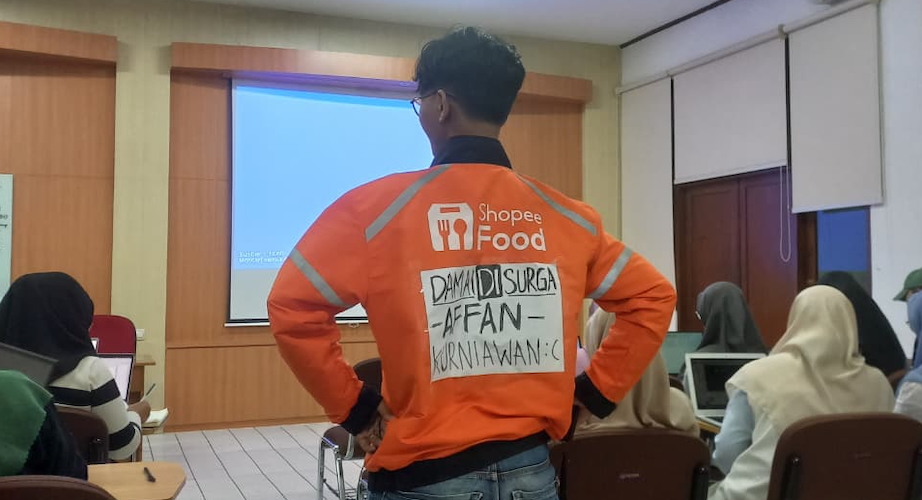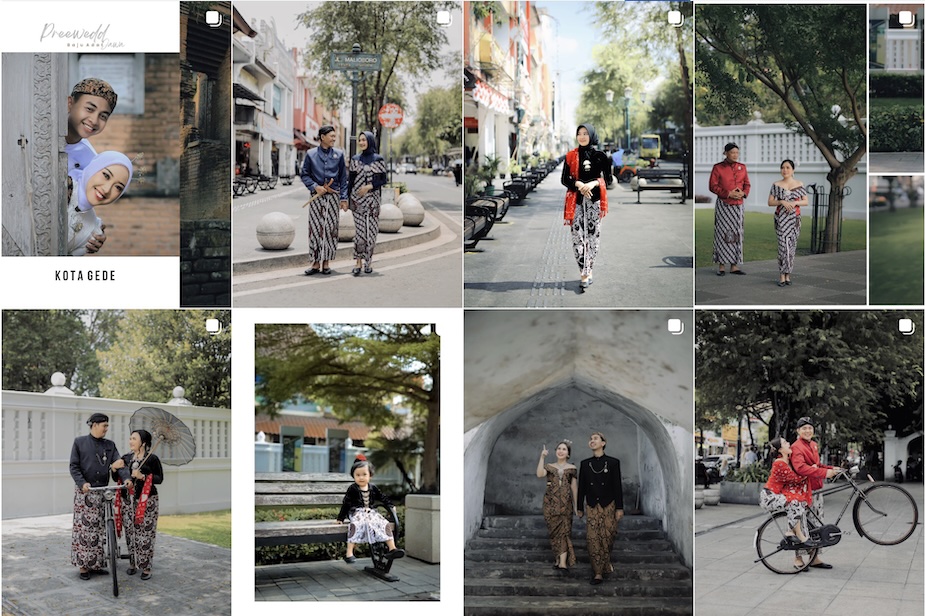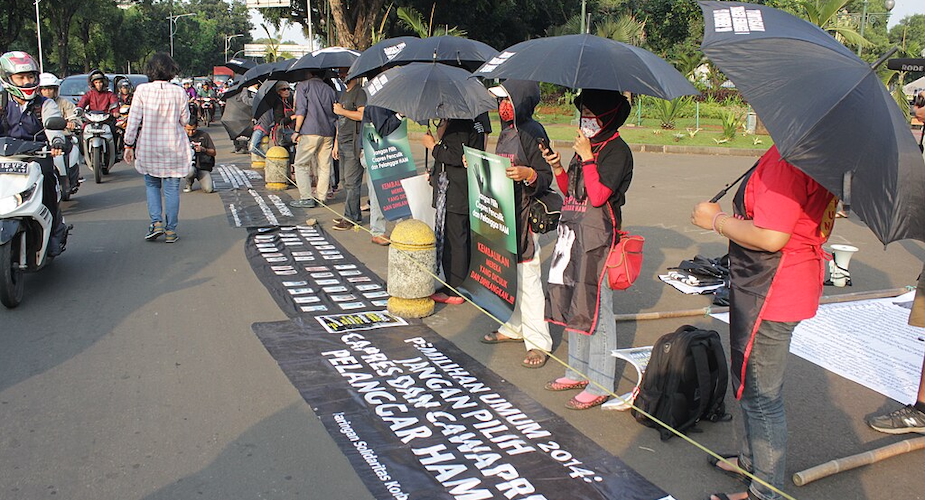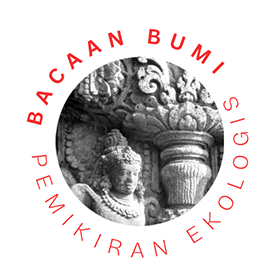Tourism and quiet dispossession in Sianjur Mula-Mula
Ompung Putri Limbong, an elderly farmer and Raja Bius (Indigenous Chief) of Bius Sipitu Tali tends his crops beside Batu Hobon – a sacred site now fenced off with tickets no one buys. Around him, the ticket booth rots, and buildings meant for tourists crumble under the mountain fog. But he remains, rooted in the land, watching over a place where history, myth, and broken promises collide.
This scene is symbolic of not just of failure but of how grand plans descend on places like Sianjur Mula-Mula with promises of prosperity. Since Lake Toba was designated as a National Tourism Strategic Area (Kawasan Strategis Pariwisata Nasional/KSPN) and later promoted to ‘super priority’ status, it has drawn increasing attention from the state and investors.
The region is now at the centre of a major push to attract domestic and international tourism, supported by infrastructure projects and national-scale promotion campaigns.
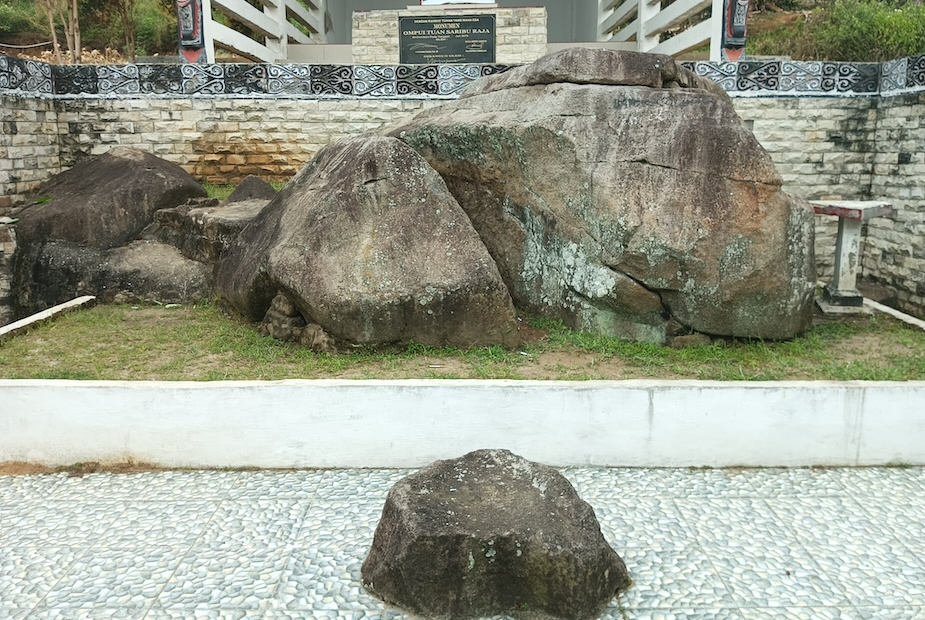
But even without it, Lake Toba has always been an attraction. Its beauty does not stem from government branding, but from the life and culture nurtured by the local communities. To understand what is happening around Lake Toba today, both these realities must be held in view.
Tourism Development in Sianjur Mula-Mula – a subdistrict in Samosir Regency widely regarded as the origin place of the Batak people – is driving new conflicts over land and cultural heritage. Underneath the promise of economic uplift lies a quiet but persistent dispossession.
When the state visits sacred sites
Sianjur Mula-Mula is home to four sites that hold sacred meaning for the Batak: Sopo Guru Tatea Bulan, Batu Hobon, Pusuk Buhit, and Sigulati. These sites are not just historical artefacts—they are living parts of Batak cosmology and remain central to the practice of the Parmalim faith.
Sianjur Mula-Mula is believed to be the origin place of the Batak People, the same role as Garden of Eden plays in Christian Faith. It is where Debata Mulajadi na Bolon (the Supreme God first created life and the first human Si Raja Batak). Given that, doing pilgrimage to these sites is equal to visiting Masjidil Haram in Islam.
This is the very tradition that Parmalim faith treated as religion, while other Batak also believe this to be an origin story of their bangso (nation, ethnic). Ompung Putri and his family are now practicing Catholicism, but their position as historical settlers of these sites made them most trusted guide to history and ritual.
Local communities, especially those belonging to the Bius Sipitu Tali indigenous institution, have historically played the role of protectors and guides at these sites. In Sarimarihit Village, for instance, as Raja Bius Ompung Putri Limbong, has long received guests at Batu Hobon while continuing to farm his land. For him, guiding visitors is a communal responsibility rooted in adat, not a source of income.
That arrangement has now changed. Initially, locals including Ompung Putri welcomed the government’s involvement, hoping for improved infrastructure and better access for visitors. But the reality was more troubling.
The Samosir district government has taken over management of Batu Hobon, introducing a Rp 5,000 entrance fee and assigning revenue to the district budget. Local guides have been sidelined. At one point, the government offered Ompung Putri Limbong the chance to officially manage Batu Hobon—as long as he could meet a target of Rp 60 million annually. He declined. ‘How could I manage the place and reach a revenue target like that,’ he asked, ‘while also tending to my fields?’
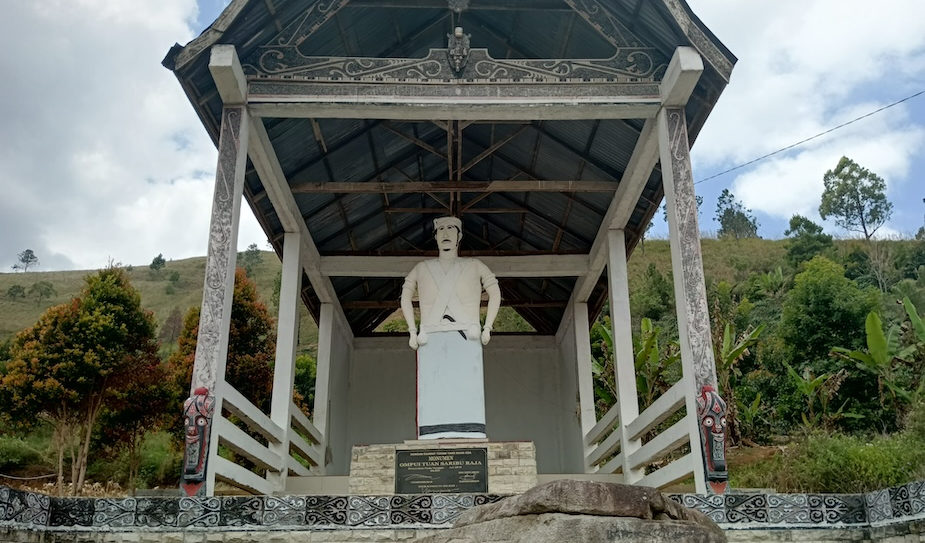
The state’s approach reflects a broader logic: sites once cared for as sacred are now seen as revenue-generating assets. What is lost in the process is more than just community control. The spirit of the place changes. Now, guests at Batu Hobon often arrive to find broken toilets, a padlocked gate, and no one to explain the site’s meaning.
According to the tourism master plan, Batu Hobon is designated a ‘Cultural Main Tourism Destination’, but the infrastructure and maintenance are minimal, and no effort has been made to formally include local communities in its management. A short distance away, the Toba Caldera Geopark Information Centre in Sigulati tells a similar story. Despite receiving public funding and being projected to generate Rp 1 billion annually, the centre is largely abandoned. Shops are shuttered, facilities are poorly maintained, and visitors are rare.
These contradictions highlight the disconnect between planning and practice. While policy documents speak of integrated tourism and community participation, the reality on the ground is a pattern of exclusion, underuse, and decay.
Agriculture vs. tourism
The tourism push has not just changed sacred sites. It has also affected how land is valued and used. Farmland is increasingly commodified, bought up or repurposed for villas, cafés, and attractions. Farmers, meanwhile, are encouraged to become parking attendants, food sellers, or photo spot managers. Local livelihoods are reduced to tourism side gigs.
This transformation affects the whole region. Data from BPS North Sumatra shows that over 80 per cent of the Samosir population depends on agriculture. But government policies and investments show far greater enthusiasm for tourism than for farming. Support for agriculture—through infrastructure, credit, or marketing—is minimal by comparison.
According to the 2022 APBD of Samosir Regency, the Department of Agriculture and Food Security received Rp 33.3 billion (3.91 per cent of the total budget), while the Department of Culture and Tourism received Rp 15.1 billion (1.77 per cent).
Although the agricultural sector received a larger nominal allocation than tourism in the 2022 APBD, field observation reveals that tourism programs tend to be more consolidated, visible, and strategically promoted—through site development and cultural events. Agricultural budgets, in contrast, often get absorbed into fragmented trainings and administration, with limited direct benefit to smallholder farmers.
In addition, the tourism sector has received significant attention and funding from the central government. Through the Lake Toba Authority (Badan Pelaksana Otorita Danau Toba/BPODT), the state has allocated Rp 4.04 trillion for infrastructure and basic utilities development around Lake Toba, including the construction of roads, ports, and tourism facilities.
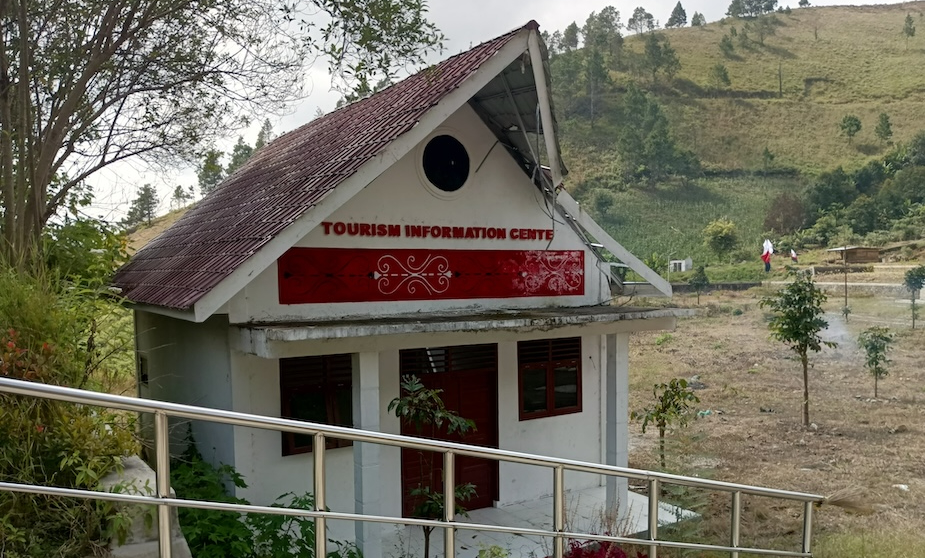
Meanwhile, local farmers continue to express concern over the disproportionate allocation of resources. In a public discussion with the Samosir District Farmers Union (STKS), it was revealed that less than 1 per cent of the district budget was allocated for direct support to farmers—a stark contrast to the visible and large-scale investments made in tourism. This gap reflects a broader structural bias in development planning, where agricultural livelihoods are sidelined in favour of tourism-driven growth.
As we already know, in this contest, the tourism development prevails. That means lands and spaces in Samosir are now reinterpreted as attractions. As it appears that tourism development will not subside in the near future, accelerating land acquisition must be anticipated. As land is lost, so are the means of production and with that, the farmers themselves disappear.
A slow dispossession
What we are witnessing in Sianjur Mula-Mula is not dramatic land grabbing, but a quieter form of exclusion. The transformation of sacred sites into ticketed attractions. The sidelining of customary leaders. The gradual conversion of farming land into tourist zones. The loss of meaning that comes when ancestral sites are turned into Instagram backdrops.
Ompung Putri Limbong put it clearly: ‘Now we just stand at a distance and watch.’
His words reflect more than disappointment. They reveal a deeper rupture: a break between land and life, between adat and administration, between meaning and money.
Even if we look at this economically rather than as just a cultural issue, it is not so hard to see it as a ticking time bomb. Dispossessed farmers, stripped of their land and skills, cannot be absorbed into the tourism workforce. At best, they become informal laborers, street vendors, or, more grimly, servants in an economy built on the ruins of their livelihoods.
Allowing tourism to flourish at the cost of farmers and local communities is a perfect recipe for a slow death.
Lake Toba’s tourism agenda may bring revenue to state coffers and opportunities to some investors. But without genuine involvement from local communities—especially those who have long lived with, worked on, and safeguarded this land—the development will remain extractive and unsustainable.
The story of Sianjur Mula-Mula should be a cautionary one. Real development is not built by removing people from their land and culture. It is built by recognising their role as stewards, not by replacing them with ticket booths and performance targets.
Dion Pardede is a local organiser and researcher based in Samosir. He works at Kelompok Studi dan Pengembangan Prakarsa Masyarakat (KSPPM), a grassroots organisation working alongside local communities around Lake Toba. KSPPM’s work focuses on land rights, agrarian reform, and environmental justice in North Sumatra.




